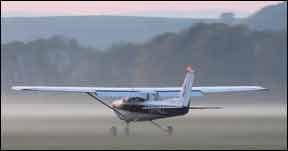On the cover of Aviation Consumer’s July 2010 issue is one of the most forlorn photos we’ve ever published: The nosegear of an LSA sitting in the middle of a lonely runway, having dropped out of the airplane after takeoff rotation. Although we didn’t intend it that way, the photo ended up as a testament to another airplane entirely, the Cessna 150.
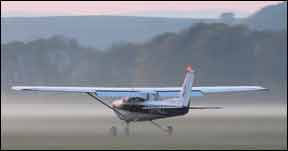
Photo courtesy Roman Fryscin
The reason? Venerable old 150s are still flying side-by-side on the rental line with new-age light sport designs and the older airplanes, despite decades of abuse, still hold up better than some of the newer designs and often require less maintenance. The harsh lesson here is that despite advances in materials and computer-aided design, the 1950s engineers who designed the 150 knew their way around structure and half a century later, what they built still remains serviceable for the foreseeable future. The airplane that trained thousands of pilots endures.
Model History
Cessna was a latecomer to the post-war pilot boom. With its iconic yellow Cub, Piper owned the market during the 1940s, but that was all to change when Cessna created the 120 and later the 140, which stayed in the model line until the early 1950s. Although only hardcore Cessna aficionados know it, the Cessna 172 actually predates the Cessna 150, which first appeared in 1959.
Unlike the 140, the 150 was created solely with the training market in mind to tap into what was then a booming market. Would-be buyers had disposable income, the economy was strong and the post-war flying frenzy was still a real trend. The world needed a practical, cheap and no frills trainer that wasn’t made of cloth.
Ever practical, Cessna provided. By modern standards, the first 150s look a bit frumpy, with their squared-off tails and a turtledeck-style fuselage, with no rear window.
But it was not to stay that way for long. In 1961, the first of many changes in the model began, starting with moving the gear struts aft two inches, curing the airplane’s tail heaviness. Ten years later, tubular gear legs with a wider track were added.
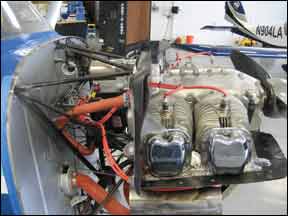
In 1964, the rear window appeared and, of course, it needed a snappy marketing moniker, thus was born “Omni Vision.” The stodgy straight tail went away in 1964, replaced by the swept-back tail, giving the airplane a more rakish look.
The overall dimensions of the airplane haven’t changed much, but its max gross weight has. The 150 began life as a 1500-pound airplane, but by 1978, the gross weight had been bumped up to 1670 pounds for the 152. For a two-place airplane, that’s a big hike but, as is usually the case, there wasn’t much payload gain due to rising empty weight.
Anyone who learned to fly in a 150 will remember the cockpit as cramped and narrow and that never changed. But Cessna did bow the doors out slightly and trimmed the center console to provide more side-to-side legroom.
The baggage compartment was also enlarged several times and one option included a rear child seat. The baggage area could accommodate up to 120 pounds of kids and/or bags, so it was suitable for a toddler and a day bag, but little else. But for a small airplane, the baggage area is rather generous and easily accessible for an instructor fishing for a chart or a hood.
In 1975, a larger fin and rudder were added and before that, electric flaps were installed. Previously, the flaps had been manually operated and some pilots complained that electrics were a step backward. (We agree.)
Engine Changes
The Cessna 150 first appeared with a 100-HP Continental O-200, a reliable and easy-to-maintain engine that matched the airframe nicely. When 80/87 gas began to fade from the market in 1978, displaced by 100LL, Cessna switched to the 110-HP Lycoming O-235 that provided more power and boosted the TBO from 1800 hours to 2000 hours and eventually 2400 hours.
As the 150 morphed into the 152, there were other changes, including a 28-volt electrical system, a one-piece cowling, a McCauley gull-wing prop, an oil cooler and redesigned fuel tanks. Sum total of changes? About 40 pounds more useful load than the original Cessna 150 had, but fully 60 pounds less than a 1948 Cessna 140 could heft. The airplane’s performance was about equal to the 150 it replaced, but the engine was susceptible to severe lead fouling when burning 100LL and the 28-volt electrical system was a nuisance.
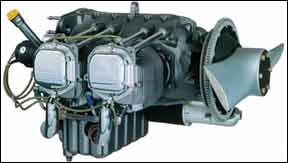
Also, the 152 turned out to have some significant warts. Early models were hard to start because of weak spark and lack of a priming plunger. Cessna added impulse coupling on both magnetos to improve this, plus direct priming for each cylinder. Mechanics complained about having to remove the prop to decowl the engine so Cessna added a split cowl. In 1981, the Lyc got a spin-on oil filter as standard, rather than the old rock screen. In 1983, Cessna and Lycoming tackled the lead fouling issue by replacing the O-235-L2C engine with the N2C variant, which the model had until it was discontinued in 1985.
Except for troublesome starter drives, the Continental O-200 used in the Cessna 150 was a reliable and robust engine that could be counted to make the 1800-hour TBO, if not beyond. The Lycoming O-235L2C was supposed to achieve three goals: Solve the O-200’s lead problem, boost power a bit to increase the payload and offset the 15 percent gain in empty weight and last, reduce noise. The higher compression O-235 Lyc delivered its 110 HP at 2550 RPM rather than the O-200’s 2750 RPM.
Did Cessna hit the mark? Not really, say operators familiar with both airplanes. In its favor, the Lyc had no starter problems, but if the engine/prop was quieter, you’d hardly notice. Owners complained about high parts prices for the O-235—including pistons and valves, the latter being sodium filled for improved cooling.
And the lead problem? Still there, say owners. The O-235 accumulated lead deposits in every nook and cranny and lead fouling of plugs became such a problem that Champion developed a special extended-electrode spark plug for this engine, the REM37BY. Mechanics say even with careful leaning, the plugs must be removed and cleaned as often as every 25 hours. In Service Instruction 1418, Lycoming explains a procedure whereby cylinders can be blast-cleaned with walnut shells without removal for top-end overhaul. Prior to this, operators found that early tops were needed due to lead fouling of the cylinders.
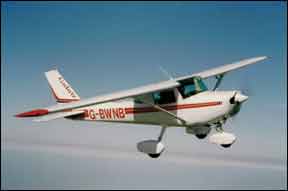
One positive aspect of the Lycoming engine is its TBO—a whopping 2400 hours. If you can keep the thing from choking with lead, it may actually reach that impressive limit. Some owners use TCP additive to help control lead. Also, thanks to intense competition in the engine overhaul field, overhaul prices remain affordable, on the order of $15,000 to $20,000.
Unique to the mass-market trainer, Cessna offered two additional versions of both the 150 and 152. The Aerobat and a seaplane conversion, which appeared in 1968. There are still a few of these models running around, some even used on the water. The seaplane was, by most accounts, a decent little water taxi, although no one would mistake it for a Beaver. It couldn’t haul much and with limited power, it took a while to unstick from the water.
The Aerobat version—which first appeared in the 150 in 1970—made a much bigger splash, although not in the water. In those days, aerobatic training was all but impossible so when the Cessna Aerobats, with their flashy checkerboard paint, showed up on the rental line, many renters responded enthusiastically. Some 5 percent of the 150/152 fleet is acrobatically capable, after a fashion.
We’re not talking Extra 300-type performance, of course. Aerobatic purists sniff at the Aerobat because it has control wheels, not a stick. Any maneuvers that require climbing back to altitude will require a plodding climb to get back in the perch. Still, the Aerobat was and is an affordable gateway into the world of aerobatics. The Aerobat commanded a price premium when new—about $1500 to $2000—but on the used market, the Aerobats bring as much as $10,000 more, or nearly 50 percent higher average retail.
Performance, Handling
The trainer market has evolved considerably since the 150 first appeared and although modern trainers such as the Diamond DA20 and a passel of LSA designs have improved the breed, technologically, at least, the 150/152 still has better than credible performance and handling traits. Interestingly, some flight schools report that although many students take intro rides in a sexy LSA with a glass panel, they they transition to a 152 or 172.
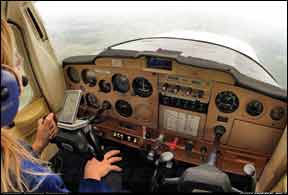
Why? Probably because the 152’s higher weight gives it a somewhat stabler feel than a hyper light LSA and pricewise, 152s remain competitive to buy and operate, so the hourly rental is less. Furthermore, some instructors say it’s easier to solo a student in a 150/152 because LSAs tend to be twitchy, especially in pitch.
But the Katana cruises faster than the 152 and uses a bit more fuel. It’s a marginally better climber than the Katana A1, with its 80-HP Rotax engine, but the C1 Katana, with its Continental IO-240, outdoes both the 152 and the A1 Katana, not to mention many LSAs.
Top speed for the 152 is given as 109 knots, same as the Tomahawk and two knots faster than the plodding Skipper. In the real world, owners say they go slower. Much slower. The airplane seems happiest at 90 to 95 knots, a realistic speed in our view.
Handling is what it is, which is predictable, with relatively light control forces and no nasty stall habits. The Cessna 150/152’s slow flight characteristics are so utterly benign that they nearly qualify as STOL airplanes. The large flaps—even when limited to 30 degrees—are quite effective, although they do generate quite a nose-down trim moment.
This is easily handled, although the control forces escalate somewhat. Students have to be taught to watch for abrupt noseups when applying full power for a go-around, training that prepares them nicely to transition into the Cessna 172, which has the same characteristic.
Landing a 150/152 is easy enough to teach and learn, to a point. And that point is often exceeded, since runway fender benders are the most common type of accident suffered by the 150/152 series and other trainers, for that matter. The model is an excellent crosswind trainer, since it has an effective rudder.
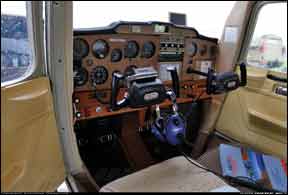
The airplane is comfortable with an approach speed of 60 knots or slower, but it will easily tolerate higher speeds, because those draggy flaps bleed off excess airspeed in a heartbeat. Land it fast and it will bounce. (Any pre-buy should include a specific check of the logs for landing damage that included nosewheel work or firewall damage.)
Operators tell us the 152’s runway performance is good, especially if the airplane is light. It’s not as good when heavy on a hot day. With a portly CFI and student aboard, more than a few 152s have trimmed the trees off the end of runways.
Speaking of payload, the 150/152 essentially carries what other popular trainers do. At 528 pounds useful, it carries a bit more than the Katana but a bit less than the Skipper and Tomahawk. Before the model got fat, some E/F/G 150s topped 600 pounds in load carrying capability.
Where the 152 shines, however, is on load flexibility. With a fuel capacity of 39 gallons for the long-range tanks, it has better range with a single pilot than either the Tomahawk or the Skipper. Does this really matter? Maybe. These aircraft are, after all, trainers, and one of the skills student pilots learn early on is how to run out of gas. In our view, the more gas aboard, the less likelihood of a fuel exhaustion event.
Cabin, Ergonomics
Cabin comfort is not much of a consideration in two-place trainers. Lessons are short and there’s no point in pretending there’s enough room in the airplane for plush seats. The 150/152 is so narrow that even pilots of moderate size will bump shoulders. Two big guys will be miserable. Although the seat height is quite low, the legroom is excellent.
In 1979, thicker seat padding became standard, but it helps only a little. Many owners have had the seats repadded or carry a pillow or two to make them more tolerable. Noise level is quite high, due to the proximity of the cabin to the engine compartment, but the advent of noise-canceling headsets and intercoms has rendered this moot.
Ventilation in the 150/152 is via the standard Cessna pull vents in the wing roots, plus in most models the windows open for taxi and can also be opened in flight. During the winter, this can be a mixed blessing and some operators tape off the root vents to reduce drafts. If the heater is well-maintained, it will get the job done.
Maintenance
Owners who use the 150/152 for personal use—and many do—can count on literally years of service from the engine, if they’re operated enough to keep corrosion at bay and leaned to avoid lead build-up. In general, these are simple airframes that don’t require much maintenance. However, any that have been used extensively as trainers—as most have—should be inspected carefully for hard landing damage, especially in the nosegear/firewall bulkhead area. Wrote owner Ed Park of Aliso Viejo, California, “Unless the guy that you bought the airplane from spent a bunch of time and money fixing up that 20-year-old airplane and fixing/replacing/repairing a lot of things, you can expect that you will be that person if you are conscientious about your maintenance.”
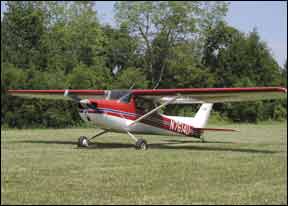
The 150/152 series has what we would call an average list of ADs, none of which are particularly onerous or expensive. The major safety-related item is the seat track AD, which prevents the seat from unlocking and sliding rearward. Most aircraft should have had this done long ago.
Owners report that annuals are thrifty—in the $800 to $1200 range, depending on parts needed. Since the airplane is so simple, owner-assist annuals are a good bet.
Mods, Owner Groups
The 150 can be given a huge power boost and even turned into a taildragger, as quite a few have been. AvCon Conversions (800-872-0988) and Bush Conversions (800-752-0748) do both engine and tailwheel mods. However, neither Bush nor AvCon were responsive to our queries, so we’re not sure if they’re still active. AvCon also has flap gap seal kits and Bush offers flap and aileron seals. AvCon also has a STOL kit. Both the AvCon and Bush’s kit puts a 150-HP or 160-HP Lycoming in place of the 100-HP Continental. No surprise that this jacks the cruise speed to 140 MPH and the climb rate to 1000 FPM, plus. Horton, Inc. (800-835-2051) sells STOL kits for the 150/152. In addition to Bush’s tailwheel conversion, Aircraft Conversion Technologies used to sell a conversion, but that’s now inactive. For information, contact Harry Dellicher at 559-784-9440. Met-Co-Aire sells wingtips for the 150 series, reach them at 714-870-4610 or www.metcoaire.com. O&N sells aux fuel tanks for the Cessna 150/152. Contact www.onaircraft.com or 570-945-3769.
A company in Washington, Air Mods N.W., sells an engine conversion for 152s that includes a new prop that boosts climb and takeoff performance by allowing the Lycoming O-235 to spin up to 2800 RPM. It also has higher compression ratio so supposedly, this decreases lead fouling. See www.airmodsnw.com.
Two organizations of note are the Cessna Pilots Association and the Cessna 150-152 Club. CPA’s Santa Maria, California, HQ is the fount of all things Cessna and members rave about its technical services. Contact CPA at 805-922-2580 or on the Web at www.cessna.org.
The Cessna 150-152 Club has a monthly newsletter that’s an excellent clearing house for information, parts, mods, maintenance and service tips. Contact the club at 805-461-1958 or www.cessna150-152club.com. For a detailed book on flying and operating Cessna 150s, contact Arman Publishing at www.Cessna150book.com.
Owner Feedback
The Cessna 150 N102DK is co-owned by Bruce Billedeaux and Chad Omo. We bought this airplane mostly because of its cost and that it was a good trainer. Chad was working on his private when we purchased the airplane. I had already accumulated over 350 hours in Piper Warriors/Cherokees, Archers and Cessna 172s and 182s. I am not, however, instrument rated. Chad now has his private and 175 hours and I have completed over 550 hours, mostly in this aircraft.
We chose this model year because it was the highest production year (over 3000 manufactured) and also because this year had the rear window and the swept tail. We love the rear view mirror! Our choice proved good as parts are readily available. We relocated the transponder from the glove box location to the center stack and needed to get the entire assembly, box and door. Cost from a wrecker? Just $35 and the door had the original placard.
We had the plane entirely stripped and painted. Added new carpet and leather seats. It does look great. We have had two annuals with the first about $1000 each. We expect this one to be more like the $500 mark as there is little to change out. We are flying it about eight to 15 hours per month between the two of us.
We get a consistent 6.1 GPH per hour fuel burn at 90 MPH (2500 RPM 70 percent power). We put in a EGT and try to keep the exhaust gas 50-90 degrees rich of peak. This translates to almost 15 miles per gallon. Not bad for something that flies.
The biggest issue with this aircraft: It’s too small for two average-size guys. We are rubbing shoulders when pilot and passenger are both 200-pounds-plus. However, if your flying mate is about 150 pounds and small shouldered, then it is quite comfortable. I fly cross country alone quite often and find it’s fine for a 5-foot 10-inch pilot.
Useful load at 1600 pounds gross is about 368 pounds with full fuel. So the already limited range of about 300 miles with adequate reserves is reduced when fuel is left behind. A good benchmark is 10 gallons per side gives two hours with reserves and 400 pounds of useful load.
We replaced the regulator with a Zeftronics Gen Control to eliminate significant static in the radios. The old Delco unit just made the radios unusable during heavy charging. We have considered replacing the generator as it is only a 15-amp unit, but with the coming LEDs, we feel that 15 amps will be adequate.
For cross country, I would like to have more fuel with tip tanks. It would give me the extra range to make 500 miles with reserves, but I just can’t justify the cost.
We have thought long and hard about getting a bigger airplane, but anything else will cost more to operate, repair and insure. It’s just hard to justify. Some people say, “Don’t you want a faster plane?,” and I say, “I am in no hurry. I like to fly.” The Cessna 150 makes it financially possible.
Bruce Billedeaux,
Terre Haute, Indiana
I own a 1962 150B, straight-tail, straight-back, with a Continental O-200. A “twenty-footer” perhaps? Logbook entries from the 1960s indicate that my 150 was a Customs-impound refugee! Telltale paint marks indicate that it may have had some sort of a belly-carrier attached to it at some point in its life. If this airplane could only speak. (Thorough annuals have not revealed any leftover traces of contraband.)
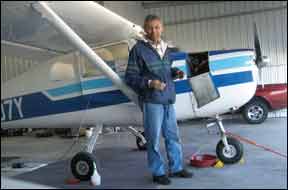
I got the 150 for about $15,000 six years ago, and gave the engine a field overhaul with new ECi cylinders and whole lot of TLC since then.
Current cost to own? Virtually zero! Other than normal maintenance, of course. I perform owner-assisted annuals. Insurance is around $500 a year. I use mogas under the Petersen STC. (Recreational Gas, as Marathon calls it. See www.pure-gas.org. I do perform the alcohol-test, nevertheless.)
At overhaul, I bade farewell to the old pull-cable starter whose clutch had completely worn out. Now I have a push-button Sky-Tec STC. Also, at overhaul, I installed a spin-on oil filter housing (from F&M) and a belly-drain (from the Cessna 150 Club) as STCs. Made sense to me that the lowest point in the fuel system should have a quick-drain instead of a plug.
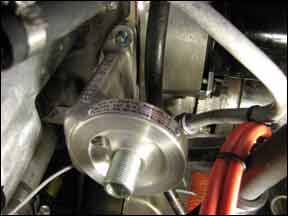
Sweet, honest little airplane to putter around in. Even though the B is the fastest of the series (woohoo!), don’t count on it for any long cross-countries, unless you’re retired, as I am. Quirk? The tanks never drain equally even though they are plumbed in parallel, so much so that it can be quite disconcerting as you watch one tank go to empty while the other one is more than half full. Even so, it doesn’t miss a beat.
Safe, solid, seat-of-the-pants, stable airplane, with no bad habits. You have to force it to spin, and even then, it recovers hands-off. The Johnson bar flaps are the best! And you have 40 degrees of them in case you need to shimmy down the proverbial pine tree. But don’t count on climbing out on a go-around if you do deploy that last notch.
My only regret? I wish I’d have turned it into a taildragger so we could live out the rest of our days like the Cessna 140s that begat these early-model 150-A, Bs and Cs.
Basically—emphasis on basic—just a lovable little airplane. Although, with me getting old, I wish it qualified as an LSA. It will be emotionally difficult for me to sell, or trade this sweetheart. But sadly, that day will come.
Chat Chatterji,
Terre Haute, Indiana
For several years, I co-owned an IFR-equipped 150 with two other guys. We all had kids who were interested in learning to fly. Turned out to be a surprisingly good family airplane when the husband and wife wanted to get away for the weekend or it was time for some one-on-one time between parent and one child.
There was something pretty special about sitting in the right seat and just watching the world go by as my daughter flew the airplane. Were some great, short-notice weekend trips where my wife and I just tossed in a small suitcase (we had reduced fuel) and flew an hour or so to someplace to escape from the world for a bit and look down at the highway traffic jams as we flew over them. That made a 150 feel very fast.
I learned a few things from ownership, even after giving about 1000 hours of dual in 150/152s:
First, do the acceptance flight yourself and do it carefully, because if the airplane is out of rig, it needs to be detected and it may expose a damage history. A lot of the airplanes have been up on a wingtip or nose.
If it is out of rig and has had wing damage, it may not be possible to ever rig it correctly without very expensive repairs to the wing structure or meat axe rigging techniques such as drooping a flap and which slows the airplane in cruise. An out-of-rig airplane may be a deal killer.
Second, the O-200 engine is great overall, but timing must be set correctly or you can fry cylinders. Third, as long as there is a decent alternate airport within range (a big if), it is an acceptable airplane for IFR operations; just a little slower than a 172, although you do sometimes get funny looks as you taxi in after shooting an ILS to minimums.
Fourth, the Cessna 150/152 Club has a strong group of owners on the forum who can provide very good technical support almost real time. The archives contain a large amount of information on just about any issue one could ever have with one of the airplanes, of any vintage and modification. I’ve never attended its annual fly in, but I note that the list of speakers is usually pretty impressive.
Rick Durden,
via e-mail
I bought my 150H, a 1968, my third aircraft, four years ago. I have been delighted with my choice. My insurance is $480 per year, annuals even less for the inspection portion. Fuel burn is less than most anything else that flies. I budget an extra $500 to $1000 each year just to “make it better.” After all, it’s 43 years old, but wears it well. The repairs so far are the typical things such as a radio and DG that each failed right after buying it, and a cylinder that needed an overhaul this year. Such is aircraft ownership in general. The real surprise was how much more I enjoyed flying it over the first two airplanes I’d owned, an ultralight for four years and an experimental for 11 years. The wonderful handling is what sold me.
I originally thought I would never buy a 150. My memory of first lessons in one was that of hating stalls, steeper than comfortable turns, getting squeezed next to an instructor and anemic climb rates. Since those basic training memories are way in the past, I decided several years ago to rent one to see why I didn’t have fond memories of it. It turns out it was all about my initial training and not the airplane!
One of the common critiques is cabin size. If you’re north of 250 pounds, consider a four seater. Many of the 150 critics are in that weight bracket. For those of us under 230 pounds, even for people as tall as 6-foot-5 inches, it fits well. Your personal width, not height, is the key here. In my search, I considered a number of aircraft possibilities. My Dad, a former Cessna 210 and later a Skymaster owner, always said, “Get a 150, they are fun, will do everything you want to do, and not break the budget.” He was right. As I looked at my shopping list of airplane requirements, the 150 fit every category. First of all, it had to be fun to fly, as that was kind of the whole point, check. Cheap to feed, insure, and repair, check. Simple and safe, check. Parts available, check. Passengers can come too and see the little houses, check. Smiles per gallon, check.
I am now a member of the Cessna 150-152 club. Anything from pre-buy ideas, maintenance issues, technical info, fly-ins and much, much more are available from this group. This is a very active bunch that is very helpful, we’ll versed and fun, too.
In fact, I have met several members over the past few years, getting to know many of them we’ll enough that we jokingly call ourselves extended airplane family.
If a better type club exists, you’d have to prove it to me.
Jim Curns,
New London, Wisconsin

